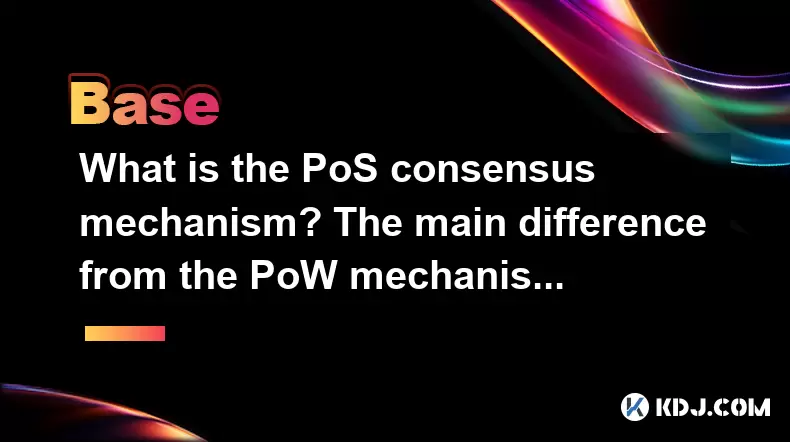-
 Bitcoin
Bitcoin $118100
0.63% -
 Ethereum
Ethereum $3750
1.52% -
 XRP
XRP $3.182
1.83% -
 Tether USDt
Tether USDt $1.000
0.02% -
 BNB
BNB $785.5
0.94% -
 Solana
Solana $186.1
1.07% -
 USDC
USDC $0.0000
0.02% -
 Dogecoin
Dogecoin $0.2378
2.56% -
 TRON
TRON $0.3196
1.64% -
 Cardano
Cardano $0.8270
2.47% -
 Hyperliquid
Hyperliquid $43.88
1.78% -
 Sui
Sui $4.201
6.36% -
 Stellar
Stellar $0.4395
2.51% -
 Chainlink
Chainlink $18.49
2.52% -
 Hedera
Hedera $0.2872
11.32% -
 Bitcoin Cash
Bitcoin Cash $559.9
2.03% -
 Avalanche
Avalanche $25.22
6.06% -
 Litecoin
Litecoin $114.5
1.42% -
 Shiba Inu
Shiba Inu $0.00001409
2.03% -
 UNUS SED LEO
UNUS SED LEO $8.987
0.15% -
 Toncoin
Toncoin $3.320
5.03% -
 Ethena USDe
Ethena USDe $1.001
0.02% -
 Polkadot
Polkadot $4.180
2.96% -
 Uniswap
Uniswap $10.55
2.55% -
 Monero
Monero $321.1
0.14% -
 Dai
Dai $1.000
0.01% -
 Pepe
Pepe $0.00001266
2.40% -
 Bitget Token
Bitget Token $4.545
0.66% -
 Aave
Aave $296.6
1.63% -
 Cronos
Cronos $0.1374
6.34%
What is the PoS consensus mechanism? The main difference from the PoW mechanism
PoS selects validators based on their stake, offering energy efficiency and scalability, unlike PoW which relies on computational power for mining.
Jun 09, 2025 at 07:50 am

What is the PoS Consensus Mechanism? The Main Difference from the PoW Mechanism
The cryptocurrency world has seen significant advancements in the technology that underpins these digital assets. Among these, the consensus mechanisms that validate transactions and secure the network are crucial. Two prominent mechanisms are Proof of Stake (PoS) and Proof of Work (PoW). This article delves into the PoS consensus mechanism and outlines its main differences from the PoW mechanism.
Understanding Proof of Stake (PoS)
Proof of Stake (PoS) is a consensus algorithm used by various blockchain networks to achieve distributed consensus. Unlike Proof of Work, which relies on computational power, PoS selects validators based on the number of coins they hold and are willing to "stake" as collateral. This approach aims to provide a more energy-efficient and scalable solution for securing the network.
In a PoS system, validators are chosen to create new blocks and validate transactions based on their stake in the network. The more coins a validator stakes, the higher their chances of being selected to forge the next block. This method incentivizes participants to hold onto their coins rather than sell them, promoting network stability and security.
How PoS Works
The operational mechanism of PoS involves several key components and processes. Here's a detailed breakdown of how it functions:
Staking: Participants lock up a certain amount of their cryptocurrency as a stake. This stake acts as a security deposit, which can be forfeited if the validator acts maliciously.
Validator Selection: The probability of being chosen as a validator to create a new block is typically proportional to the size of the stake. Some PoS systems use a random selection process weighted by the stake amount.
Block Creation: Once selected, the validator creates a new block and adds it to the blockchain. This process is less energy-intensive than mining in PoW systems.
Rewards and Penalties: Validators receive rewards for successfully creating and validating blocks. However, if they act maliciously or fail to validate correctly, they can lose part or all of their stake.
Advantages of PoS
PoS offers several advantages over PoW, making it an attractive option for many blockchain networks. Here are some of the key benefits:
Energy Efficiency: PoS does not require the extensive computational power needed for mining in PoW systems. This results in significantly lower energy consumption, making it more environmentally friendly.
Security: The requirement for validators to stake their coins creates a strong disincentive for malicious behavior. If a validator attempts to compromise the network, they risk losing their entire stake.
Scalability: PoS systems can process transactions more quickly and handle higher transaction volumes than PoW systems, which are often limited by the mining process.
Decentralization: By lowering the barriers to entry, PoS can promote greater decentralization. Unlike PoW, where mining is dominated by those with the most powerful hardware, PoS allows more participants to become validators.
Comparing PoS and PoW: Key Differences
Understanding the main differences between PoS and PoW is essential for grasping the unique attributes of each consensus mechanism. Here are the primary distinctions:
Resource Requirements: PoW requires significant computational power and electricity to solve complex mathematical problems. In contrast, PoS relies on the stake held by participants, making it more resource-efficient.
Validator Selection: PoW selects miners based on their ability to solve cryptographic puzzles first. PoS, on the other hand, selects validators based on the size of their stake, which is a more democratic process.
Security Model: PoW's security relies on the economic cost of mining, making it expensive for attackers to control the network. PoS's security is based on the economic stake of validators, which they risk losing if they act maliciously.
Energy Consumption: PoW is notorious for its high energy consumption due to the mining process. PoS, being less resource-intensive, significantly reduces the energy footprint of the blockchain network.
Examples of PoS and PoW in Action
To illustrate the practical application of these consensus mechanisms, let's look at some well-known cryptocurrencies that use PoS and PoW:
Ethereum 2.0: Ethereum is transitioning from PoW to PoS with its Ethereum 2.0 upgrade. This move is expected to enhance the network's scalability and reduce its environmental impact.
Cardano: Cardano uses a PoS protocol called Ouroboros, which is designed to be secure and scalable. Validators in Cardano are chosen based on their stake and a random selection process.
Bitcoin: Bitcoin, the first and most well-known cryptocurrency, uses PoW. Miners compete to solve complex puzzles, and the first to solve it gets to add a new block to the blockchain.
Litecoin: Similar to Bitcoin, Litecoin uses PoW but employs a different algorithm called Scrypt, which is less memory-intensive.
Challenges and Considerations for PoS
While PoS offers numerous benefits, it also presents certain challenges and considerations that need to be addressed:
Nothing at Stake Problem: In some PoS systems, validators might be incentivized to vote for multiple blockchain forks, hoping one will become the dominant chain. This is known as the "nothing at stake" problem, which can lead to network instability.
Centralization Risks: If a small number of participants hold a large portion of the total stake, they could potentially control the network. This risk of centralization needs to be mitigated through careful design and governance.
Initial Distribution: The initial distribution of coins in a PoS system can impact its fairness and security. If a few entities hold a significant portion of the initial supply, they could have undue influence over the network.
Implementing PoS: A Step-by-Step Guide
For those interested in participating in a PoS network, here is a detailed guide on how to get started:
Choose a PoS Cryptocurrency: Research and select a cryptocurrency that uses PoS. Popular options include Ethereum 2.0, Cardano, and Tezos.
Set Up a Wallet: Download and install a wallet compatible with the chosen cryptocurrency. Ensure the wallet supports staking.
Acquire the Cryptocurrency: Purchase the necessary amount of the cryptocurrency you wish to stake. You can buy it from a reputable exchange and transfer it to your wallet.
Stake Your Coins: Follow the wallet's instructions to stake your coins. This usually involves locking up a certain amount of your cryptocurrency as a stake.
Monitor and Manage: Keep an eye on your stake and the network's performance. Some wallets allow you to adjust your stake or withdraw it if needed.
Receive Rewards: As a validator, you will receive rewards for successfully creating and validating blocks. These rewards are typically added to your stake or can be withdrawn to your wallet.
Frequently Asked Questions
Q1: Can I stake on multiple PoS networks simultaneously?
Yes, you can stake on multiple PoS networks as long as you have the required amount of each cryptocurrency and compatible wallets. However, managing multiple stakes can be complex, so ensure you understand the specifics of each network.
Q2: How do I choose the right PoS cryptocurrency to stake?
Consider factors such as the network's security, the potential rewards, the lock-up period for stakes, and the overall reputation of the project. Researching the community and development team can also provide valuable insights.
Q3: What happens if a PoS network experiences a 51% attack?
In a PoS system, a 51% attack would require an attacker to control more than half of the total stake. If successful, the attacker could potentially double-spend coins or halt transactions. However, the economic cost of such an attack is high, as the attacker risks losing their entire stake.
Q4: Is it possible to lose my stake in a PoS system?
Yes, it is possible to lose your stake if you act maliciously or fail to validate transactions correctly. PoS systems often have mechanisms in place to penalize validators who compromise the network's integrity.
Disclaimer:info@kdj.com
The information provided is not trading advice. kdj.com does not assume any responsibility for any investments made based on the information provided in this article. Cryptocurrencies are highly volatile and it is highly recommended that you invest with caution after thorough research!
If you believe that the content used on this website infringes your copyright, please contact us immediately (info@kdj.com) and we will delete it promptly.
- XRP, DOGE, RTX: What's Hot and What's Not in the Crypto World?
- 2025-07-27 03:30:12
- BlockDAG, UNI, POL, Cryptos: Navigating the 2025 Landscape
- 2025-07-27 02:50:12
- Fastex's FTN Collectible Notes: A Fusion of Crypto and Collectibles
- 2025-07-27 02:30:12
- Bitcoin, Institutions, and Resistance: A New Era Dawns
- 2025-07-27 02:30:12
- Bitcoin's Institutional Buying: Fueling the Rally to New Heights?
- 2025-07-27 02:50:12
- Pump.fun's Incentive Campaign: Can it Regain Market Share?
- 2025-07-27 02:55:22
Related knowledge

What is the difference between CeFi and DeFi?
Jul 22,2025 at 12:28am
Understanding CeFi and DeFiIn the world of cryptocurrency, CeFi (Centralized Finance) and DeFi (Decentralized Finance) represent two distinct financia...

How to qualify for potential crypto airdrops?
Jul 23,2025 at 06:49am
Understanding What Crypto Airdrops AreCrypto airdrops refer to the distribution of free tokens or coins to a large number of wallet addresses, often u...

What is a crypto "airdrop farmer"?
Jul 24,2025 at 10:22pm
Understanding the Role of a Crypto 'Airdrop Farmer'A crypto 'airdrop farmer' refers to an individual who actively participates in cryptocurrency airdr...

What is the difference between a sidechain and a Layer 2?
Jul 20,2025 at 11:35pm
Understanding the Concept of SidechainsA sidechain is a separate blockchain that runs parallel to the main blockchain, typically the mainnet of a cryp...

What is the Inter-Blockchain Communication Protocol (IBC)?
Jul 19,2025 at 10:43am
Understanding the Inter-Blockchain Communication Protocol (IBC)The Inter-Blockchain Communication Protocol (IBC) is a cross-chain communication protoc...

How does sharding improve scalability?
Jul 20,2025 at 01:21am
Understanding Sharding in BlockchainSharding is a database partitioning technique that is increasingly being adopted in blockchain technology to enhan...

What is the difference between CeFi and DeFi?
Jul 22,2025 at 12:28am
Understanding CeFi and DeFiIn the world of cryptocurrency, CeFi (Centralized Finance) and DeFi (Decentralized Finance) represent two distinct financia...

How to qualify for potential crypto airdrops?
Jul 23,2025 at 06:49am
Understanding What Crypto Airdrops AreCrypto airdrops refer to the distribution of free tokens or coins to a large number of wallet addresses, often u...

What is a crypto "airdrop farmer"?
Jul 24,2025 at 10:22pm
Understanding the Role of a Crypto 'Airdrop Farmer'A crypto 'airdrop farmer' refers to an individual who actively participates in cryptocurrency airdr...

What is the difference between a sidechain and a Layer 2?
Jul 20,2025 at 11:35pm
Understanding the Concept of SidechainsA sidechain is a separate blockchain that runs parallel to the main blockchain, typically the mainnet of a cryp...

What is the Inter-Blockchain Communication Protocol (IBC)?
Jul 19,2025 at 10:43am
Understanding the Inter-Blockchain Communication Protocol (IBC)The Inter-Blockchain Communication Protocol (IBC) is a cross-chain communication protoc...

How does sharding improve scalability?
Jul 20,2025 at 01:21am
Understanding Sharding in BlockchainSharding is a database partitioning technique that is increasingly being adopted in blockchain technology to enhan...
See all articles

























































































